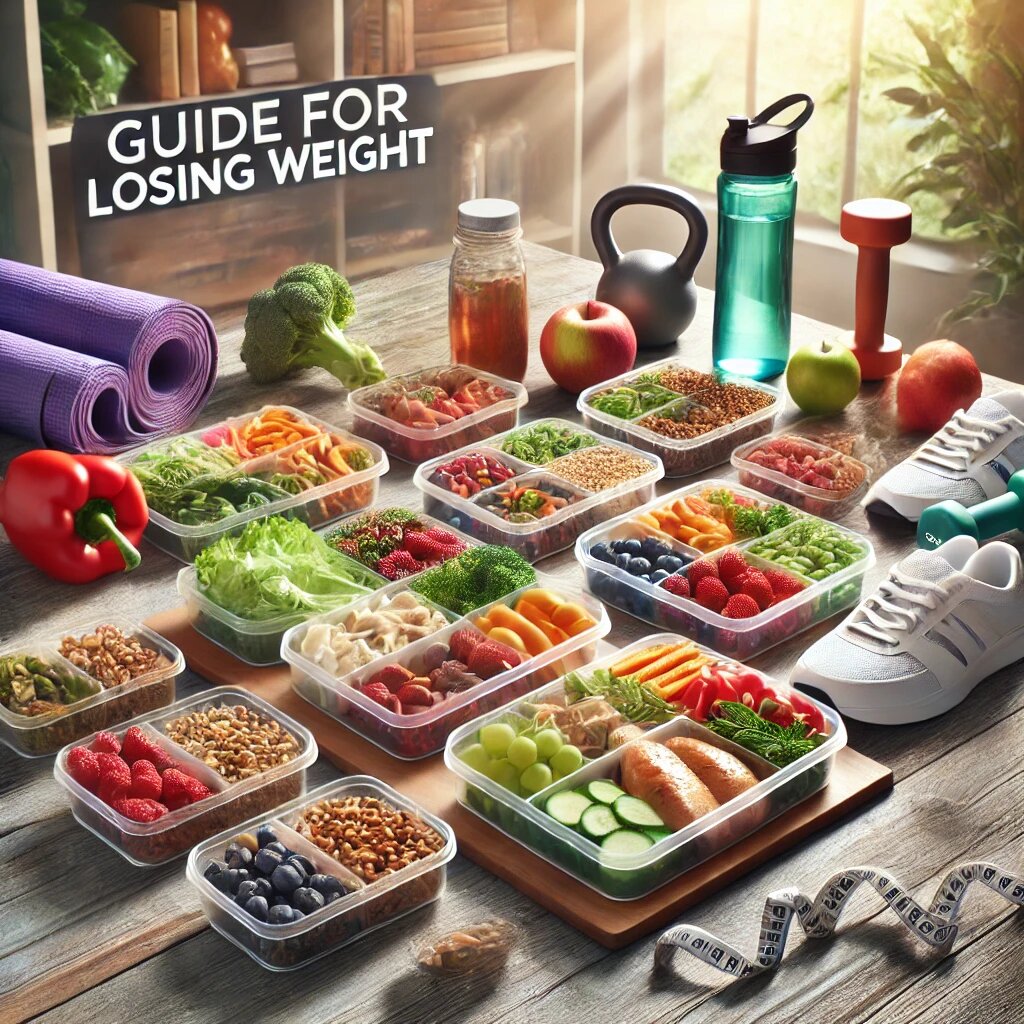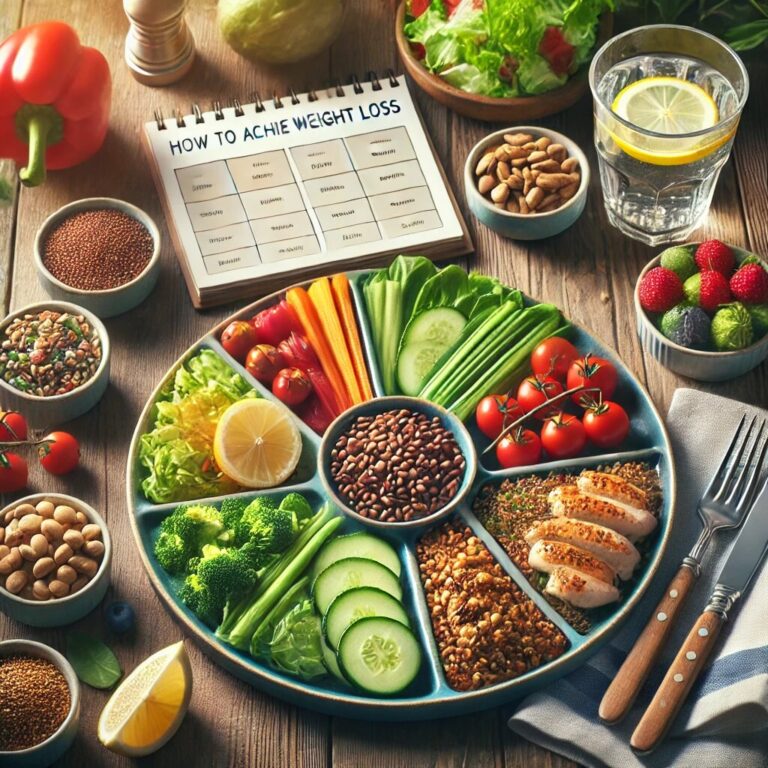Guide to Losing Weight
If you’re wondering how to lose weight and create a healthy, sustainable approach, this guide is for you. Many embark on their weight loss journey seeking quick weight loss tips but soon realize that sustainable weight loss is the real goal. Quick fixes might seem attractive, but they often fail to bring long-lasting results. This guide focuses on healthy weight loss methods and effective strategies that promote a balanced, achievable approach to weight management.
Whether you’re interested in weight loss for beginners or want to refine your routine, adopting a mindset for sustainable change is crucial. From building a balanced weight loss meal plan to learning about the best diet for weight loss, this guide offers actionable insights that can help you lose weight naturally. By combining low-calorie foods with regular exercise for weight loss, you’ll create habits that support long-term wellness, rather than yo-yo dieting. Let’s dive into the essentials of sustainable weight loss, helping you feel confident and motivated to make lasting changes.
Understanding Weight Loss Fundamentals
The basics of weight loss for beginners start with creating a calorie deficit for weight loss. This means consuming fewer calories than your body burns. By including low-calorie foods and high-protein weight loss foods in your diet, you can feel fuller while eating less. Protein, in particular, helps maintain muscle, which boosts metabolism, making it easier to burn calories efficiently. Incorporating a healthy weight loss diet that’s rich in vegetables, lean proteins, and whole grains can provide essential nutrients while supporting your weight loss journey.
Exercise also plays a vital role. The debate between cardio vs. strength for weight loss often arises, but both are important. Cardio burns calories quickly, while strength training builds muscle, which helps burn calories at rest. Finding the best workouts to lose weight involves balancing both forms of exercise, which creates a well-rounded weight loss routine. And for those looking for faster options, intermittent fasting for weight loss is a popular strategy. However, sustainable change and a balanced approach remain key to effective weight loss strategies.
Setting Realistic Goals
Setting realistic goals is a critical first step in a successful weight loss journey. Focus on achievable milestones rather than immediate results, as sustainable weight loss requires time and consistency. Begin by defining your ideal outcome, like aiming to lose a few pounds each month instead of expecting drastic changes in weeks. Use the SMART goal framework (Specific, Measurable, Achievable, Relevant, Time-bound) to stay on track.
For weight loss motivation, consider creating a weight loss routine that fits your lifestyle. Set small daily goals, like choosing healthy snacking for weight loss or adding more morning routines for weight loss. You can also build in activities that keep you moving throughout the day, especially if you’re busy. By choosing goals around sustainable habits, you’re not just focused on losing weight but building a healthy lifestyle.
Building a Weight Loss Meal Plan
Creating an effective weight loss meal plan is essential for sustainable weight loss. Focus on nutrient-dense, low-calorie foods like leafy greens, lean proteins, whole grains, and healthy fats, which help you feel full without excessive calories. Including high-protein weight loss foods like chicken, tofu, and beans not only keeps you satisfied but also helps maintain muscle mass, which is crucial for a faster metabolism.
A balanced meal plan might also integrate healthy snacking for weight loss to curb hunger between meals. Snacks like Greek yogurt, nuts, or veggies with hummus are both nutritious and filling. To enhance fat-burning, consider options like the Keto diet for weight loss, which limits carbs and emphasizes healthy fats and proteins, though it may not be suitable for everyone. Planning meals ahead and tracking your daily intake can prevent overeating and ensure consistency.
Experiment with intermittent fasting as another method to structure your meals. Some find that intermittent fasting for weight loss helps them naturally reduce calorie intake without feeling deprived. Ultimately, the best diet for weight loss is one that is sustainable, enjoyable, and complements your lifestyle.
Incorporating Exercise for Faster Results
Exercise is a cornerstone of any effective weight loss journey and can accelerate results when combined with a healthy diet. Both cardio and strength training play critical roles in a weight loss routine. Cardio, such as running, cycling, or swimming, boosts heart rate and burns calories efficiently, making it ideal for creating a calorie deficit for weight loss. Aim for a mix of high-intensity interval training (HIIT) and steady-state cardio for optimal fat-burning.
Strength training, on the other hand, builds muscle, which increases your resting metabolic rate. When comparing cardio vs. strength for weight loss, a balanced approach using both types of workouts proves most effective. The best workouts to lose weight typically include strength sessions with exercises like squats, lunges, and push-ups that engage multiple muscle groups.
Consistency is key, so create a realistic schedule that includes at least 150 minutes of cardio per week alongside two or more days of strength training. Even with a busy lifestyle, incorporating regular movement helps solidify weight loss goals and build a lasting, healthy routine.
Mindset and Motivation for Weight Loss
Your mindset is a powerful driver in achieving and maintaining weight loss. Adopting a weight loss mindset focuses on small, daily efforts that contribute to long-term results. Rather than striving for perfection, aim for consistency, as building healthy habits often requires patience and resilience. Keeping your “why” in mind—whether it’s improved health, higher energy, or feeling more confident—helps sustain weight loss motivation when challenges arise.
Motivation can wane, so incorporating reminders and celebrating small wins keeps the journey positive. Creating a morning routine for weight loss can set a healthy tone for the day, whether it’s a quick workout, a nutritious breakfast, or even meditation. If you encounter setbacks, remember that they’re part of the process, not a reflection of failure.
Keeping a journal, setting up accountability (like a workout buddy), and engaging in communities can also support a strong mindset. Ultimately, weight loss success is as much about internal growth and self-discipline as it is about physical changes, making mindset a crucial component of any successful weight loss strategy.
Common Weight Loss Mistakes to Avoid
Understanding common weight loss mistakes can help you stay on track and avoid setbacks. One frequent mistake is over-restricting calories, which may initially lead to quick weight loss but often isn’t sustainable. Extreme calorie deficits can result in nutrient deficiencies and cause fatigue, leading to burnout. Instead, aim for a manageable calorie deficit for weight loss that supports a healthy weight loss diet.
Another pitfall is skipping meals, thinking it will help reduce calorie intake. In reality, skipping meals can lead to overeating later on. It’s more effective to structure a balanced weight loss meal plan that includes high-protein weight loss foods and healthy snacking for weight loss to maintain energy throughout the day. Neglecting strength training is also a common oversight; incorporating both cardio and strength training will enhance results.
Lastly, relying solely on trendy diets, such as the Keto diet for weight loss, without proper understanding can be ineffective or unsustainable. Weight loss without dieting may be possible by focusing on sustainable habits, so avoid the “all-or-nothing” mentality and instead aim for balance in your weight loss journey.
Lifestyle Changes for Long-Term Success
True sustainable weight loss comes from integrating small, lasting lifestyle changes rather than temporary fixes. Start with simple shifts, like incorporating low-calorie foods into meals, choosing healthy weight loss methods over drastic diets, and prioritizing exercise for weight loss. These habits gradually become part of your daily routine and contribute to long-term weight loss tips that are easy to maintain.
Building a morning routine for weight loss can be especially impactful, helping you set a healthy tone for the day. Whether it’s a brief workout, a nutritious breakfast, or time for planning meals, these habits encourage consistency. Additionally, managing stress is crucial, as stress can lead to emotional eating and disrupt weight loss efforts. Incorporate relaxation techniques, like deep breathing or short breaks, to stay on track.
By focusing on healthy choices over time and letting go of perfection, you can lose weight naturally and develop a balanced approach that makes it easier to maintain your desired weight. This mindset supports not only weight loss but also overall wellness and long-term success.
Tracking Progress and Adjusting as Needed
Monitoring progress is an essential part of any weight loss journey. Tracking your food intake, workouts, and body measurements provides insight into what’s working and where you might need to adjust. Apps and journals are popular tools for this, making it easier to log meals, assess your weight loss meal plan, and keep a close watch on your weight loss routine.
If you encounter plateaus, adjust your strategy slightly. Experiment with different foods, such as adding more high-protein weight loss foods or testing intermittent fasting for weight loss to find what fits best. Also, evaluate your exercise routine; switching up cardio and strength training can refresh your body’s response to workouts.
Don’t forget that progress isn’t just about the scale. Notice other improvements, such as increased stamina, mood, and sleep quality. Staying flexible and willing to make changes to your healthy weight loss diet or exercise routine can keep you motivated and ensure sustainable weight loss results over time.
Frequently Asked Questions (FAQs)
- How to lose weight safely? – Focus on creating a balanced calorie deficit for weight loss through nutritious foods and regular exercise.
- What are some quick weight loss tips? – Opt for high-protein weight loss foods, manage portions, and incorporate regular cardio workouts.
- Is the Keto diet for weight loss effective? – The keto diet can work for some, but a balanced approach might be more sustainable for many people.
- How to lose belly fat specifically? – Targeted fat loss is a myth, but focusing on a healthy diet, strength training, and cardio helps reduce overall body fat.
- What’s better: cardio or strength for weight loss? – A mix of both cardio and strength training is ideal for fat loss vs. weight loss and overall body composition.
Conclusion and Final Tips
Achieving sustainable weight loss is a journey, not a sprint. Focus on adopting healthy weight loss methods that suit your lifestyle, incorporating low-calorie foods, effective weight loss strategies, and a balanced weight loss mindset. Combining these methods with a weight loss meal plan and a consistent weight loss routine that includes both cardio and strength exercises can maximize results.
Remember that setbacks are natural and a part of the process. Consistency, patience, and a focus on small, manageable goals help maintain weight loss motivation, even when progress feels slow. Ultimately, learning to love and nurture your body through healthy habits brings you closer to a sustainable lifestyle.


